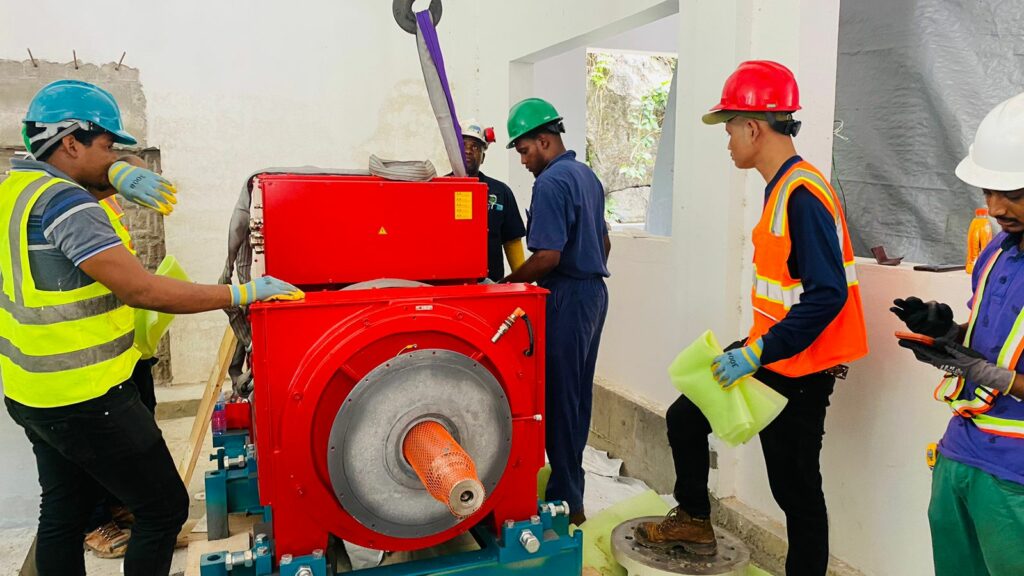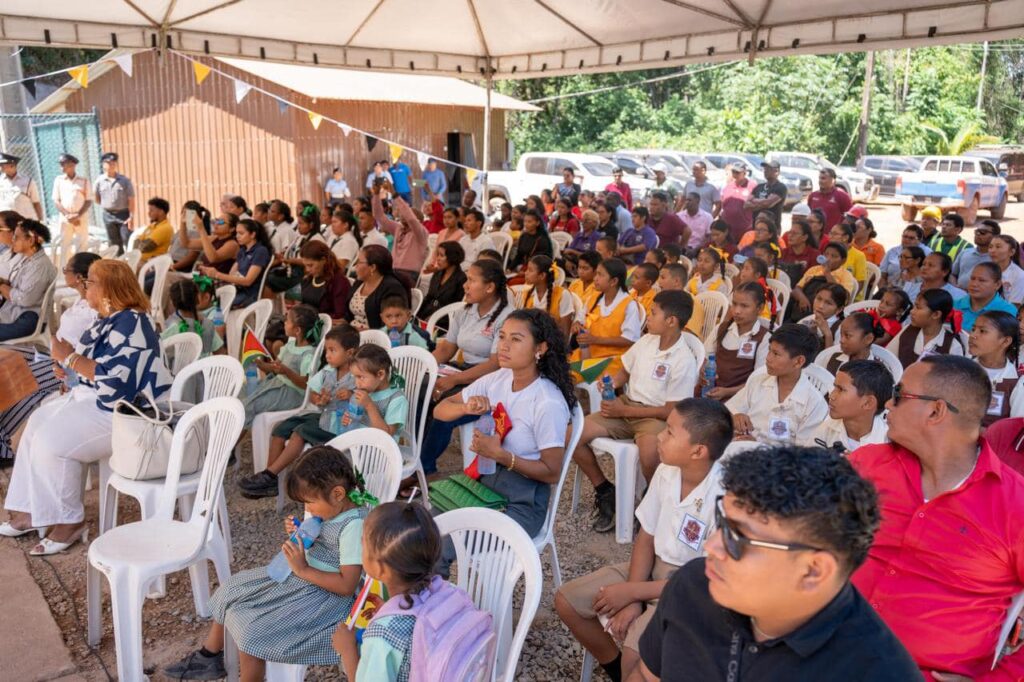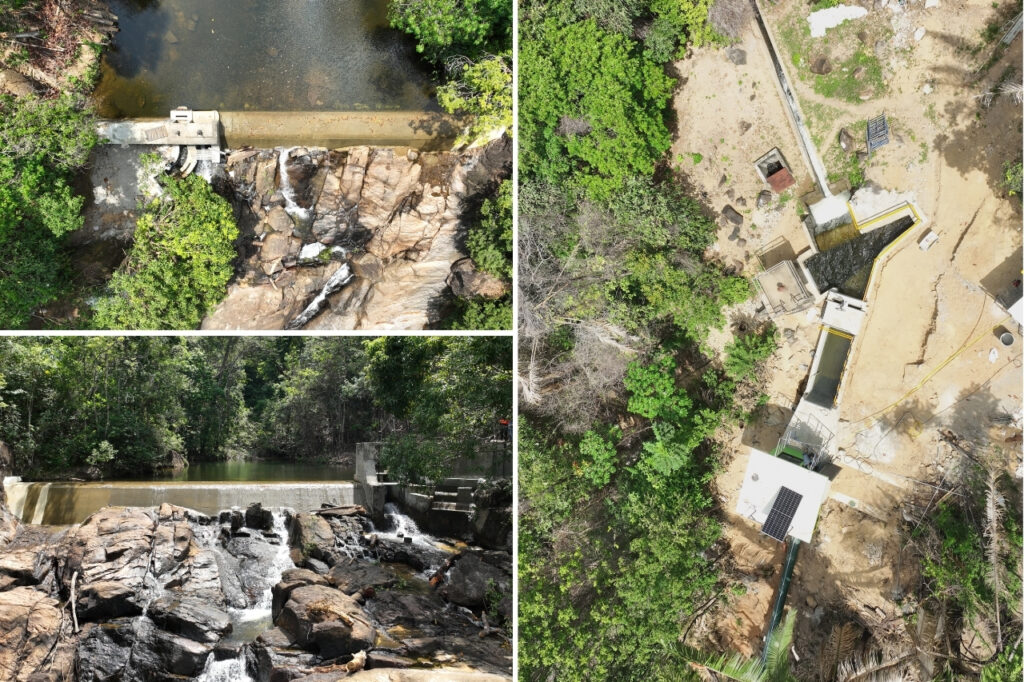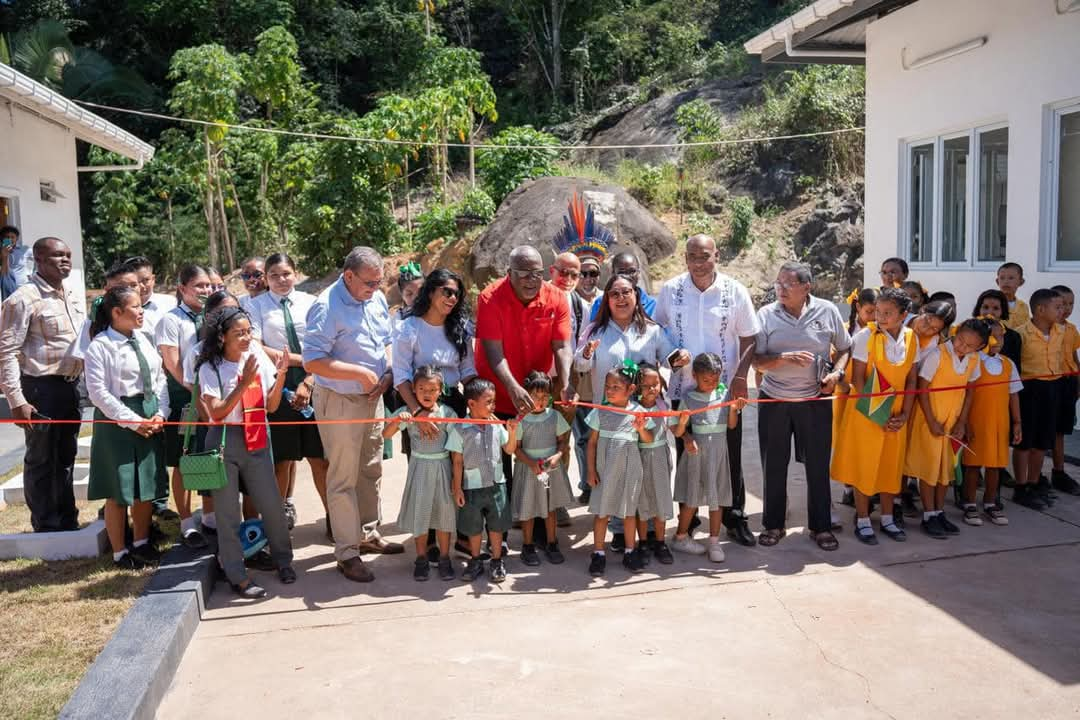Prime Minister Brigadier (Ret’d), the Honourable Mark Phillips officially commissioned the 0.7MW Moco Moco Hydropower Plant last Friday. Also present were the Minister of Amerindian Affairs, Hon. Pauline Sukhai; Minister of Local Government and Regional Development, Hon. Sonia Parag; Chair of the GEA Board of Directors, Mr. Jerome Khan; along with other regional officials and key project stakeholders.
– Region now benefits from hydropower plant, solar farm and diesel generators working together for the first time to provide energy
Georgetown, December 17, 2024 – Guyana continued its rapid transition to renewable energy with the commissioning of the newly rehabilitated and upgraded 0.7-megawatt (MW) Moco Moco Hydropower Plant in Lethem, Region Nine (Upper Takutu-Upper Essequibo) on Friday last.
This marks a major achievement in the country’s efforts to harness its abundant natural resources and provide affordable, reliable, and stable energy. The hydropower plant is expected to boost electricity capacity, improve efficiency, and enhance socio-economic development, benefitting approximately 7,548 people across the region.
History is also being made in Guyana, for it is the first time that a hydropower plant, solar farm, and diesel generators are working together to supply energy in Guyana.
Completed on October 19, 2024, the hydropower plant can now supply up to 700 kilowatts (kW) of renewable energy to the grid operated by the Lethem Power Company Incorporated (LMPCI). This will help to reduce LMPCI’s dependence on fossil fuels and cut carbon emissions.
This reconstructed plant replaces the defunct 500 kW Moco Moco Hydropower Plant. The Moco Moco site, originally developed in 1999 under an agreement between the Government of Guyana and the People’s Republic of China, ceased operation in 2003 due to a landslide along the penstock alignment caused by heavy rainfall.
The Government of Guyana received funding for the initiative through a US$14.63 million loan from the Islamic Development Bank (IsDB) for the construction of a 0.7MW hydropower plant and communication line at Moco Moco, a 1.5MW Hydropower plant at Kumu and 16.54km transmission line located in Region Nine (Upper Takutu-Upper Essequibo).
In November 2022, Vidullanka PLC, a Sri Lankan firm, was awarded an Engineering, Procurement, and Construction (EPC) contract valued at US$12.85 million to construct the two hydropower plants. The rehabilitation and upgrade of the Moco-Moco Hydroplant cost US$3.7875 million, while the cost for the new 1.5MW Kumu hydropower plant is US$9.0625 million.

The Guyana Energy Agency (GEA) as the Executing Agency was responsible for overseeing the successful rehabilitation and upgrade of the 0.7MW Moco Moco Hydropower Plant.
The Moco Moco Hydropower Plant includes a weir, diversion system, forebay, penstock, powerhouse, tail water canal, step-up substation, transmission line and administration buildings.
The plant is also a run-of-river type design that has a small weir rather than a dam or reservoir. While a dam stores water for release when needed, the weir allows for continuous natural flow while diverting some water for power generation. Run-of-river (RoR) hydropower plants have significantly lower environmental impacts when compared to dam-based projects.
Unlike dams, these types of plants avoid large reservoirs, helping to preserve aquatic ecosystems, minimize habitat loss, and maintain natural river flows. They do not create stagnant water that generates methane, have less impact on water quality and sediment flow, require less land, and do not displace communities and cultural sites.
The Moco Moco Hydropower Plant is a high head plant at 206.9 metres with penstock pipe length of 628 metres, along with two pelton-type turbines and a design flow of 0.44 metre cube per second.
An Era of Energy and Socio-Economic Development
These energy initiatives are part of an electrification programme designed to bridge the energy divide in Hinterland and riverine communities not connected to the national grid. The initiative is in line with Guyana’s focuses on expanding rural electrification through micro-grids, solar photovoltaic (PV) systems with batteries, run-of-river, river dam hydro, and hybrid renewable energy systems.
The hydropower plant is a powerful driver of socio-economic development, stimulating growth for households and businesses in the community, township, and region. In addition to generating electricity, the 0.7MW Moco Moco Hydropower Plant provides several benefits including creating jobs and enhancing essential services, including education, telecommunications, agriculture, healthcare, water supply, and transportation.

Additionally, the combined capacity of the 0.7-megawatt Moco Moco Hydropower Plant, the 1.5-megawatt Kumu Hydropower Pant, and a previously installed 1-megawatt solar PV farm has the potential to supply Lethem and surrounding communities with approximately 89% from renewable energy.
In Guyana, hydropower remains as one of the most important sources of renewable electricity, with a capacity of some 8.5 gigawatts (GW). The country has made significant strides in expanding its hydropower sources to supply energy to the regional grids and Hinterland villages.
One of the key energy projects being pursued is the construction of the 165-megawatt (MW) Amalia Falls Hydropower Plant (AFHP). By harnessing its extensive river networks, Guyana aims to promote initiatives that meet and exceed the country’s growing energy needs.
The country is diversifying its energy mix, underpinned by the LCDS 2030, to increase the share of renewables to include hydropower, solar, wind and natural gas, to add 500 MW of new capacity to power residential and commercial users. This also supports the nation’s achievement of Sustainable Development Goal (SDG) 7, aimed at modernizing energy systems, enhancing energy and food security, while contributing to climate resilience.


